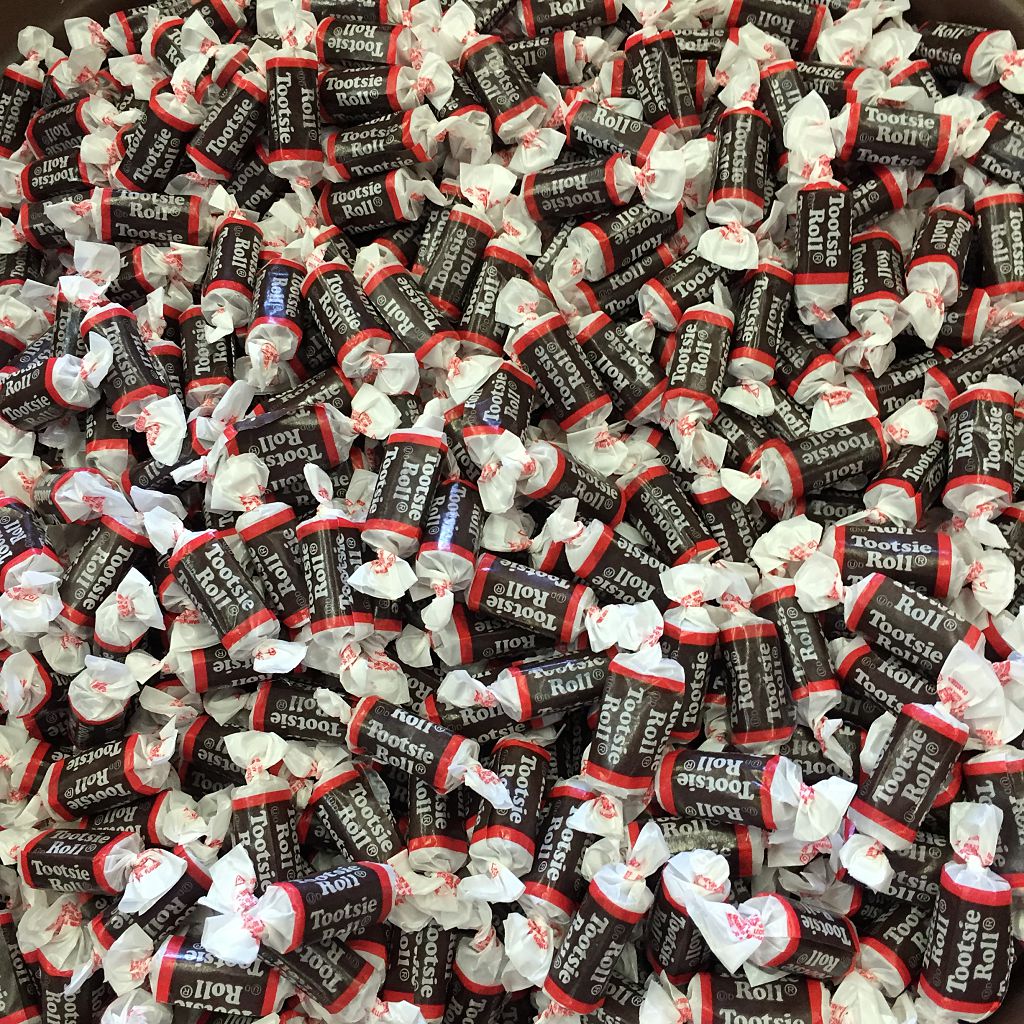
Don’t be spooked! Be sure to stock up on Made in USA candy this Halloween.
When trick-or-treaters across the country dress up in costumes and go door-to-door in search of candy this Halloween, their sacks will most likely be filled with at least one handful of Tootsie Rolls.
For the past 128 years, Tootsie Rolls have been a favorite among America’s children, and production continues to roll at the 3.2 million square-foot factory in South Side Chicago. With wide national distribution at grocery stores and drug stores, it will be easy this weekend to stock up on the gooey, taffy-like treats to prepare for when ghosts and goblins arrive at your door.
The Chicago manufacturing plant of Tootsie Roll Industries produces more than 65 million pieces of the classic American candy per day.
Yes, you read that right – 65 million Tootsie Rolls per day!
Tootsie Roll Industries employees approximately 2,300 workers worldwide. Its American workforce is represented by the Bakery, Confectionery, Tobacco Workers and Grain Millers International Union (BCTGM) Local 1 in Chicago.
Other candies, such as M&M’s, Hershey’s Chocolates and Reese’s Peanut Butter Cups may be more popular in 2024, but Tootsie Rolls still garner a large share of the annual $3.5 billion Halloween Candy Business.
Tootsie Rolls were invented by Leo Hirschfield in 1896 and sold for one penny. Hirschfield named the candy after his 5-year-old daughter Clara, who he often called “Tootsie.”
The bite-sized chocolate-flavored candies were made by hand and sold at Hirschfield’s small candy shop before a move to a four-story Manhattan factory in 1905.
Tootsie Roll manufacturing relocated to a New Jersey factory in 1938 before settling into its current home in Chicago in 1968. While distinctly American, Tootsie Roll Industries does have manufacturing facilities in Mexico and Spain to supply global markets.
In these days of increasing food allergens, the simple ingredients in Tootsie Rolls make the candy gluten free and completely peanut and tree nut free.
Tootsie Rolls are made from a mixture of cocoa, sugar, milk, and corn syrup. The ingredients are mixed and heated in large tube-shaped ovens and then are left to cool on sheet pans. Once cooled, the mix is put through several extruders and rollers until the final candy size is attained. It is then cut and wrapped and ready for shipping.
Tootsie Rolls require so much corn syrup to become that taffy-like chocolate-flavored candy that 22,000 gallons of the liquid sweetener arrive by train at the factory each day.
Tootsie Rolls have been a staple of American soldiers throughout history and were included in G.I. rations during WWII to provide soldiers with a quick energy burst.
It is said that Tootsie Rolls were Frank Sinatra’s favorite candy, and that the famous singer required them backstage before his concerts. Lore has it that Sinatra was laid to rest with a handful of the chewy treats and a bottle of Jack Daniels.
The Chicago manufacturing facility also makes the popular Tootsie Pop suckers that were invented in 1931. The question still lingers today of “how many licks it takes to get to the center of a Tootsie Pop?”
Since 1970, the company has received more than 20,000 letters from children around the world who believe they have solved the mystery behind how many licks it takes to reach the delicious center. Estimates from the kids run from a low of 100 licks to a high of 5,800 licks with most ranging from 600 to 800 licks.
Every child that sends in a letter about the Tootsie Pops receives a certificate called “The Clean Stick Award” but we may never know the definitive answer to the “lick” question.
Tootsie Rolls are sold individually wrapped in different sized bags and while they no longer maintain their initial price of one penny, the gooey candies are one of the most affordable treats on the market.
Here are some other Made in America candy companies whose products can be easily found before Halloween:
Butterfinger and Baby Ruth: A longtime staple of Halloween treats, both candies are made at the Ferrara Candy Company factory in Franklin Park, Ill. The candy bars were first produced more than 100 years ago, and Baby Ruth was reintroduced to the marketplace in 2019 with U.S.-grown, dry-roasted peanuts replacing peanuts roasted in oil. The preservative TBHQ was also removed.
M&Ms: The little chocolate-covered chocolates hit the market in 1941and are made at plants in Cleveland, Tenn. and Hackettstown, New Jersey. The convenient mini packs are perfect for trick-or-treaters.
Hershey Bars: We all know about Hershey, Pennsylvania but this giant candy maker also manufactures its chocolate across the globe like so many of the major players. The Hershey Bar is the flagship chocolate of this 130-year-old company and is referred to as “The Great American Candy Bar.” Hershey also makes the popular Reese’s Peanut Butter Cups and manufactures Nestles Kit Kat Bars for American consumers.
Almond Joy/Mounds: These two classic American candy bars made their debut in 1946 in Connecticut and today are made by The Hershey Company at its factory in Robinson, Ill.
Dum-Dums: The colorful lollipops were first manufactured in 1924 at the Akron Candy Company in Bellevue, Ohio. Spangler Candy bought the brand in 1953 and has been making 12 million Dum-Dums every day in Bryan, Ohio which dubs itself the “Lollipop Capital of the World.”
